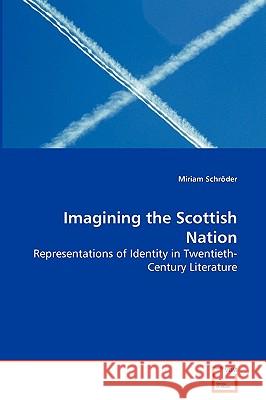Imagining the Scottish Nation - Representations of Identity in Twentieth-Century Literature » książka
Imagining the Scottish Nation - Representations of Identity in Twentieth-Century Literature
ISBN-13: 9783639075410 / Angielski / Miękka / 2008 / 140 str.
Imagining the Scottish Nation - Representations of Identity in Twentieth-Century Literature
ISBN-13: 9783639075410 / Angielski / Miękka / 2008 / 140 str.
(netto: 258,35 VAT: 5%)
Najniższa cena z 30 dni: 270,51
ok. 16-18 dni roboczych
Bez gwarancji dostawy przed świętami
Darmowa dostawa!
Nation and identity are two of the catchwords of cultural politics. Discourses related to these concepts have ever been especially pertinent to Scotland, owing to the nation s complex relationship with England. Throughout the intricate political affairs that bound these nations to one another, Scotland has looked for distinctive ways to express itself, resulting in displays of national identity peppered with Scottish images. While their representations vary, their continued use proves them to be vital to the nation s imagination. This study examines the concept of national identity in Scottish literature of the twentieth century by focusing on the portrayal of aspects of national relevance and their contribution to the creation of Scottishness in selected novels by Lewis Grassic Gibbon, Muriel Spark and Alasdair Gray. The representations of Scottish identity that are explored in the texts are not the images of a common national ideal, nor are they standards to which the images must conform in order to be Scottish. This study rather evaluates various facets which provide the space of the discourses that constitute national identity."
Nation and identity are two of the catchwords of cultural politics. Discourses related to these concepts have ever been especially pertinent to Scotland, owing to the nation’s complex relationship with England. Throughout the intricate political affairs that bound these nations to one another, Scotland has looked for distinctive ways to express itself, resulting in displays of national identity peppered with Scottish images. While their representations vary, their continued use proves them to be vital to the nation’s imagination. This study examines the concept of national identity in Scottish literature of the twentieth century by focusing on the portrayal of aspects of national relevance and their contribution to the creation of Scottishness in selected novels by Lewis Grassic Gibbon, Muriel Spark and Alasdair Gray. The representations of Scottish identity that are explored in the texts are not the images of a common national ideal, nor are they standards to which the images must conform in order to be Scottish. This study rather evaluates various facets which provide the space of the discourses that constitute national identity.











